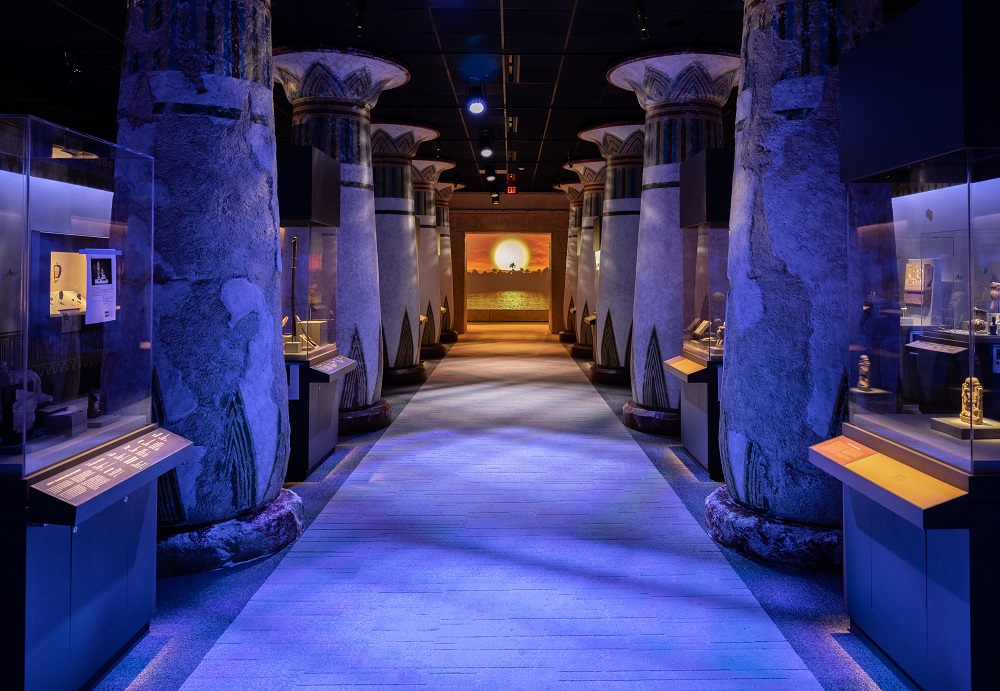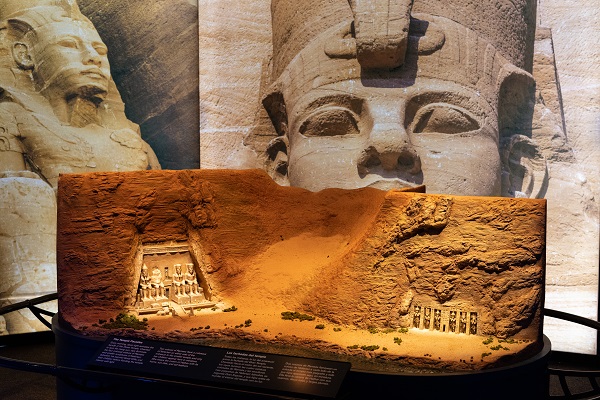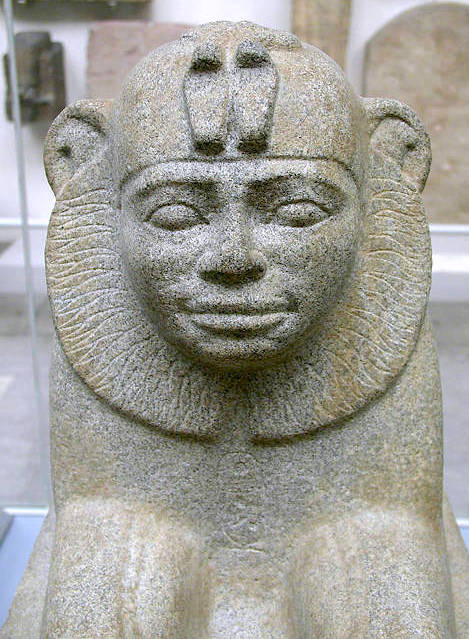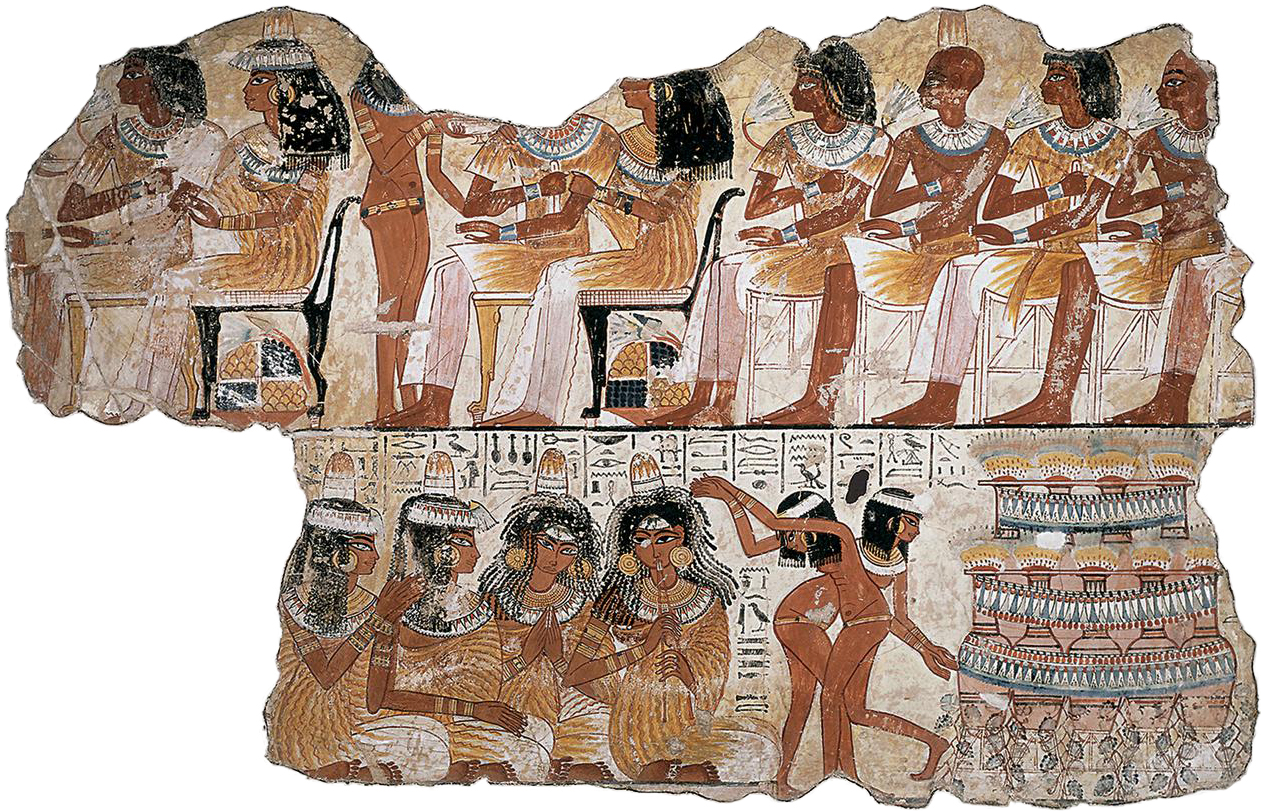The week is finally over! While only five days long, the workweek can certainly feel like an eternity. Which got me thinking (as many things do) about how the Egyptians measured time and thought about eternity.
 Barely an inch in height, this small hammered gold object depicts a man kneeling, wearing a knee-length pleated linen kilt and a long wig which comes down in two lappets on either side of his face – the typical get-up of Egyptian gods. His right hand stretches out to grasp a tall element with a curving top; his missing left hand originally did the same.
Barely an inch in height, this small hammered gold object depicts a man kneeling, wearing a knee-length pleated linen kilt and a long wig which comes down in two lappets on either side of his face – the typical get-up of Egyptian gods. His right hand stretches out to grasp a tall element with a curving top; his missing left hand originally did the same.
His pose and accessories identify him as the god Heh. Larger, more detailed representations show that the curved objects he holds are palm ribs, notched to tally up the years. The ‘years’ often rest on crouching frogs or tadpoles, the hieroglyphic sign for ‘100,000;’ these in turn sit on top of tied rings, symbolizing enduring protection.
 With all this in mind, it’s no surprise that Heh was considered the god of eternity, and was himself used as the hieroglyphic sign for ‘1,000,000’ – the largest number the Egyptians wished to write. Images of Heh in temples and on royal objects provided an eternal framework for the rituals that surrounded them. Tutankhamun was buried with a mirror in a Heh-shaped case, keeping him forever safe and youthful.
With all this in mind, it’s no surprise that Heh was considered the god of eternity, and was himself used as the hieroglyphic sign for ‘1,000,000’ – the largest number the Egyptians wished to write. Images of Heh in temples and on royal objects provided an eternal framework for the rituals that surrounded them. Tutankhamun was buried with a mirror in a Heh-shaped case, keeping him forever safe and youthful.
Our Heh is smaller and less finely worked than these, but is still made from expensive gold and would have been a cherished possession of its owner. A loop soldered to his back allowed him to be attached to a cord, where he would have served as an amuletic charm on a necklace, or possibly an element of a diadem.
Excavated parallels to our Heh date to the late Old Kingdom and First Intermediate Period (which we Egyptologists abbreviate to ‘FIP’) of Egyptian history (Dynasties 6-10, around 2300-2000 BC), and illuminate the problems we can run into when studying the past. Literary accounts of the First Intermediate Period describe it as a period in which the legitimate king was unable to exercise his authority: chaos, fighting, and famine ensued until the kings of the Middle Kingdom were able to reunite the country.
Excavations of FIP cemeteries, however, reveal a different picture. Valuable metal objects like weapons and our Heh are preserved in far higher quantities from FIP graves than Old Kingdom graves. If the FIP didn’t benefit the king and his court, less privileged people used the weakening of royal control as an opportunity to enrich themselves in this life and the next.
The amulet of Heh will go on display in the Hall of Ancient Egypt in the summer. Keep an eye out for him!







